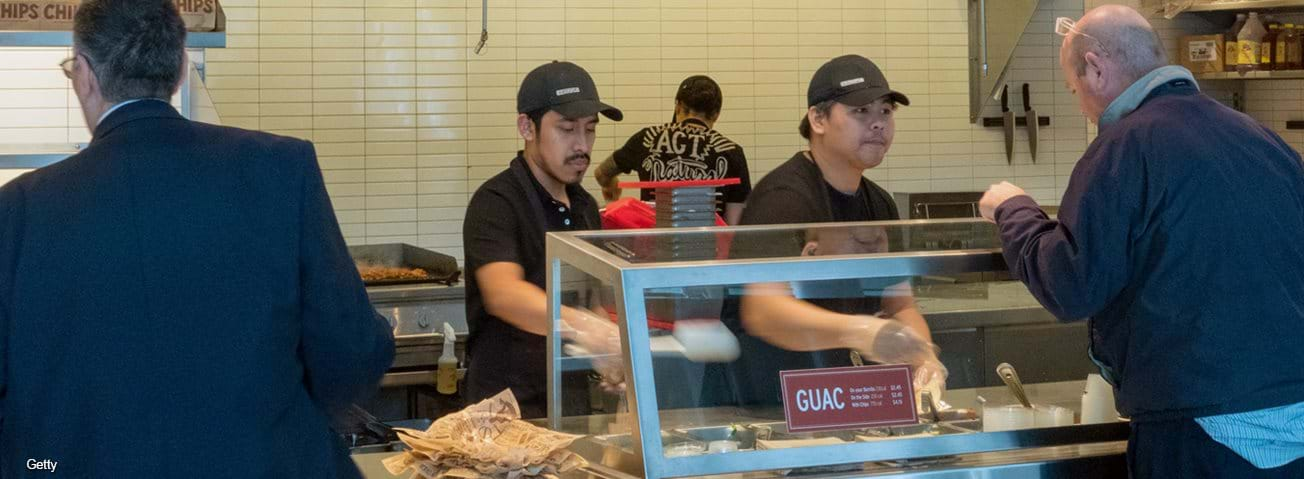Growth in Quick-Service Restaurants Outpaced Full-Service Restaurants in Most U.S. Counties

Over the last decade and a half, the number of quick-service restaurants operating in the United States grew by nearly 20 percent—from roughly 285,000 establishments in 2000 to over 340,000 in 2015. A recent ERS examination of changes in the U.S. food service industry found quick-service restaurants—eating places where food is ordered and paid for at a counter—even grew in number during the Great Recession, which lasted from December 2007 to June 2009.
In comparison, the number of full-service restaurants—where wait staff take orders for food and beverages at tables and customers pay after eating—remained essentially unchanged during 2000-15. These differing growth rates resulted in quick-service restaurants taking the majority spot: as of 2015, quick-service restaurants accounted for 54 percent of all restaurants nationwide. Fifteen years earlier, quick-service restaurants accounted for just under 50 percent of the Nation’s restaurants.
A significant driver of quick-service restaurant growth was the emergence of the fast-casual restaurant—a category of quick-service restaurants embodying the format’s typical counter service and price point but with perceived higher quality of menu offerings and ingredients, as well as ambiance much like casual full-service restaurants. Fast-casual restaurants accounted for 2.9 percent of quick-service restaurants in 2000 and expanded to 10.8 percent by 2015. Prominent fast-casual chains, such as Chipotle and Panera, were largely responsible for fast-casual restaurants’ growing number of establishments and thus grew their share of quick-service restaurant sales.
Growth in quick-service restaurants did not unfold uniformly in all regions of the country. Many urban counties, especially those in the Mid-Atlantic and Southeast, experienced growth in quick-service restaurants during 2000-15 that exceeded 30 percent, a significantly higher rate than the 20-percent national average. A large portion of new quick-service restaurants in urban counties were fast-casual eating places.
For rural counties, the story is more mixed. While some rural counties experienced growth in quick-service restaurants during 2000-15, others sustained losses, especially in the central United States, consistent with patterns of rural-urban migration. For instance, in many of the agriculture-dominated rural counties of the West North Central United States, population fell and the number of quick-service restaurants dropped by 30.0 to 87.5 percent. Few quick-service restaurants in rural counties were fast-casual restaurants, and these establishments tended to offer more traditional quick-service menus focusing on hamburgers and pizza. In most urban and rural counties in the U.S. in 2015, quick-service restaurants accounted for the majority of restaurants.
America’s Eating Habits: Food Away From Home, by Michelle Saksena, Abigail Okrent, Tobenna D. Anekwe, Clare Cho, Chris Dicken, Anne Effland, Howard Elitzak, Joanne Guthrie, Karen Hamrick, Jeffrey Hyman, Young Jo, Biing-Hwan Lin, Lisa Mancino, Patrick W. McLaughlin, Ilya Rahkovsky, Katherine Ralston, Travis A. Smith, Hayden Stewart, Jessica E. Todd, and Charlotte Tuttle, ERS, September 2018


